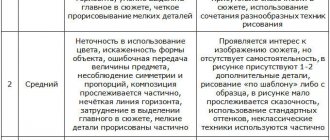Concept and essence
Primitive man sought to understand and transform the world around him.
At first he came into contact with nature, animals, and inanimate objects. As I developed, I learned to create, change objects, and transform nature. Activities are a controversial, little-studied topic. They began to pay active attention to it in the middle of the 20th century. A. Leontyev defined it as the process of satisfying the needs of the subject. For Soviet psychologists, it was not the activity itself that was important, but the mental processes based on it.
The term “activity” should be distinguished from the synonyms “movement” and “activity”. These terms describe the movement of matter. To describe the properties of inanimate matter, the term “motion” must be used.
The appearance of living matter caused the emergence of a new form of movement - activity. The actions that animals perform to maintain existence should be called life activities. The activity of an individual with awareness can be called full-fledged activity.
Some psychologists believe that highly organized animals also have the ability to engage in conscious activity. Primates, in addition to the actions necessary for survival, have the ability to play.
Interaction of levels
Processes that arise in the unconscious phase can easily move into consciousness. The opposite situation also happens, when the conscious is repressed into the subconscious.
The interaction of the conscious and the extraconscious can occur in a coordinated or contradictory manner, manifesting itself in various logically incompatible human actions, which are based on intrapersonal conflict.
The presence of consciousness, subconscious, and unconscious in a person determines the relative independence of various human reactions:
- Innate, unconscious and instinctive.
- Automated actions.
- Consciously strong-willed.
History of study and followers
A. Bernstein and P. Anokhin managed to identify general patterns. Psychologists studied the organization of movements, brain activity aimed at movement. This served as the basis for the creation of the theory of functional systems, which explains the structure of goal-directed activity.
According to the theory, goal-directed activity should consist of sequential elements. The motivation to initiate action is a perceived need.
For the first time, a description of the motif is found in the works of K. Obukhovsky, V. Kovalev. They conducted a series of experiments that showed that motive influences an individual's willingness to perform a purposeful action. Lack of motive is the reason for refusing to act.
Structure
Activity refers to not only the external, but also the internal activity of a person. This is a complex category that includes many aspects of human interaction with the world. Activities include simple and complex actions.
Simple ones, as a rule, include three structural elements:
- target selection;
- execution;
- evaluation of results.
Complex actions consist of a number of simple ones, which acquire the status of sequential operations.
Activity begins with a motive - an internal drive. A motive is an argument in favor of performing an action, an awareness of its personal meaning. All motives can be divided into two large categories:
- Consciousness is characteristic of mature individuals. They guide activities over long periods of a person’s life.
- Unconscious - manifest themselves, as a rule, in the form of emotions.
Motives may change depending on the situation.
Structure and features
Scientists distinguish macrostructure and internal structure of activity. The macrostructure contains components responsible for simple and complex actions. The basic element of the structure is the operation. An operation is a set of movements aimed at accomplishing a given task. When motivation arises, a person draws up a program:
- forms a goal;
- selects an action;
- performs an action.
This totality is a macrostructure.
The internal framework discusses these components in detail. The need that arises in an individual is dictated by the discrepancy between the real situation and the desired result.
To set a record in sports, an athlete needs to train and develop skills. He cannot immediately fulfill the need. During training, he compares the result with the achievements of other athletes.
Based on this conclusion, psychologists came to the conclusion that the motive is the result of comparison and the desire to be like others.
Subject and principles
Behaviorism is in psychology, briefly and clearly
Activity is always aimed at something or someone, i.e. it cannot be pointless. Scientists identify two main principles:
- Functionality - a person relies on already developed mental elements and mobilizes forces to achieve a goal.
- Systematicity - activity always has a certain structure, it is influenced by the individual qualities of the individual.
Psychological activity is of great importance, as it makes it possible to understand the peculiarities of the functioning of the human personality.
Levels
Within the psychological structure of activity there are 3 levels that control certain types of actions: from lower to higher. Each individual has them and has varying degrees of internal control.
Unconscious level
At the unconscious level there are simple instincts inherent in humans and animals. They are regulated by biological mechanisms. Such instincts include actions aimed at satisfying vital needs: the instinct of reproduction, survival, self-preservation.
The mechanisms are not autonomous, they can be controlled. In a familiar situation, a person restrains internal aspirations; in a critical situation, control weakens and the mechanism is activated.
Subconscious level
The subconscious part is responsible for the work of skills and abilities that an individual acquires throughout life. It also contains the impulsive-emotional sphere: aspirations, moral attitudes, passions, drives. The subconscious level is the core of personality.
Conscious level
At the conscious level are knowledge and cultural norms. This part of the psyche controls others, controls instincts, not allowing the survival mechanism to start on its own. Control can be overcome.
In the human psyche there is a constant struggle between instinctive mechanisms and consciousness. Subjugation of the subconscious requires volitional effort. If consciousness cannot function normally, a person loses the ability to behave adequately. He is controlled by the subconscious and becomes dangerous to others.
Activities
Despite the fact that the concepts of activity in human psychology are quite diverse and have many descriptions, in psychology it is customary to distinguish three main types:
- Labor activity is a process aimed at results, obtaining a product.
- Learning is the activity of acquiring knowledge, skills and abilities.
- Play is a special type of activity that allows you to master social experience. Accelerate the moral development of children, especially through social roles.
The activity that determines the formation of basic psychological formations in a person at each stage of development is usually called leading activity.
Forms
A mentally healthy person should equally develop:
- Sensation is a reflection of the surrounding world using the senses. Helps to navigate the environment.
- Perception - recognizing an object, forming an image of an object.
- Representation is the recreation of an image of an object that does not affect the senses. Representation is impossible if memory and thinking are impaired.
- Thinking is a process necessary for collecting, storing information, and reproducing it. Participates in the operation of other processes.
- Attention is a response to a stimulus directed at an object. Directed attention is an active process of research and selection of information.
- Will is the level of expression of aspiration. Necessary to achieve the goal.
The development of individual forms occurs unevenly. The foundations and developmental trends are laid in childhood. If one form is not developed enough, it will negatively affect the others. Memory problems affect thinking, lack of will affects perception.
Classification of actions (psychology)
Any type of activity is possible with the sequential implementation of specific actions. Psychology calls four types of them:
| Types of actions | Description, examples |
| Instinctive | That is, genetic, unconscious. For example, during a fire, a mother rushes to save her child, despite a mortal threat to herself (maternal instinct). Instinct can cause conscious actions - the same mother is looking for optimal means and ways of escape from a fire |
| Reflex | Reactions to irritants that are not conscious to a person: rubbing a sore spot, coughing in a smoky room |
| Impulsive | a) Unconscious reaction to surprises of any nature: the exclamation “Wow!” typical for a frightened person and for an unexpectedly happy one. b) Partially conscious impulsive actions: a person frightened during an attack takes defensive measures |
| Strong-willed | Basic, conscious actions. For example, trained to work with a book, a student correctly builds a chain of his actions: carefully read the text several times, highlight the main theme, the main characters, give them a description, etc. |
For humans, the main types of actions are volitional. A well-mannered person knows how to subordinate his instincts to his will and act reasonably thoughtfully in critical situations when an excess of emotions can partially or completely turn off rational thinking.
Classification
For normal existence, both types of activity are equally important: physical and intellectual. They are interconnected, subordinate to one mechanism aimed at harmonious development.
Physical form
Physical activity refers to movement performed to achieve a goal. The action occurs under the influence of motive and is associated with the work of physical functions. Physical activity is preceded by mental activity - first a person forms an image, then makes an attempt to embody it. Physical activity is necessary to meet the needs of life.
Intelligent Form
Intellectual activity can be realized without the participation of physical activity (thinking does not require physical movements). She participates in satisfying the lower and higher needs of life.
Functions
In order for actions to be directed and lead to the intended goal, a person must master 3 methods of developing mental processes:
- Play is a primary activity that helps a child develop mental processes. Through play, children undergo primary socialization and learn to interact with others. Play influences the development of thinking, preparing the child for the next method.
- Educational - necessary for the child’s formation in a team, choice, and mastery of a profession. The quality of education affects the child’s future life and choice of workplace.
- Labor - necessary for the implementation of professional skills and self-realization. Labor is important for the socialization of individuals, the process of evolution.
If a person has not mastered a story game in childhood, he will not be able to fully master the educational game and will lose the need to realize himself in work. It is difficult for such people to become a part of society; their social skills do not develop. Play is of key importance for preschoolers; for adults it can be used as a therapeutic method.
What is human activity
Like many representatives of the animal world, man is a doer. He is able to change and improve his own environment and living conditions as a result of work and his inherent transformative attitude towards the environment.
In nature there is no such object (living or non-living) as an “activity”: it cannot be drawn or photographed. However, activity and person do not exist separately.
Visible conscious changes in living conditions are one of its results; it is productive. The other is internal changes, self-improvement. Man, working, discovered, learned and invented new ways of developing his own mental, physiological, and mental processes. That is, being an active subject, he has the object of his transformations not only the whole world, but also himself, his society.
Study methods
The phenomenon was studied by domestic and foreign psychologists. Commonly accepted theories:
- Theory of S. Rubinstein. Activity is subject to external conditions. It is indivisible with consciousness and has a complex structure. To adapt to external conditions, a person must regulate behavior. A person learns control. At the same time, the connection between actions and consciousness develops.
- Theory of A. Leontiev. The researcher believed that internal activity is the transition of an external mental process into an internal one. A person with hearing loss can reproduce a sound in their mind even though they cannot hear it. Activity is a complex of operations that arose during the development of consciousness.
- Theory of L. Vygotsky. He considered activity as a result of the work of higher mental functions. Among primitive people, higher mental functions formed relationships between people, but were transformed into mental phenomena.
Since activity is a complex process, its study is possible only with the use of practical experiments and computer technology. This is a significant question for research in psychology, sociology, philosophy, biology and other sciences. Research results can change the idea of a person and their place in the world around them.
41. Activity as the basis of activityA person’s activity is directly manifested in his behavior
.
However, when we observe animals, we also talk about their behavior. The difference between animal behavior and human behavior is that it is directly biological
.
In other words, animal behavior is possible only in relation to an object, a vital biological need, always remaining within the limits of their instinctive, biological relationship to nature. In relation to a person, behavior
is a set of movements, acts and actions that can be observed by another person and which are limited and regulated not only by his biological needs, but also by the social environment. Representing first of all a social being, a person in his behavior, even if it is not purposeful, acts in accordance with the social environment of procedures and patterns that must be followed.
Another form of manifestation of human activity is activity
.
Activity
is a dynamic system of interactions between a subject and the world, during which the emergence and embodiment of a mental image in an object and the implementation of the subject’s mediated relations in objective reality occur.
Activity
- this is the internal (mental) and external (physical) activity of a person, regulated by a conscious goal. In relation to a person with other people, his activity is carried out, that is, it expresses the person’s personality and at the same time it forms his personality.
Activity is understood as a specific form of a person’s relationship to the world around him and himself, expressed in the expedient change and transformation of the world and human consciousness. By changing the world around us, a person thereby changes the conditions of his existence. The transformation of reality, in turn, changes the conditions and direction of human activity. In activity, a person creates objects of material and spiritual culture, transforms his abilities, builds society, creates something that without his activity would not exist in nature. The concept of activity is related to the concept of activity, but is not identical to it. K. A. Abulkhanova-Slavskaya
The fundamental difference between activity and activity is determined by the fact that activity comes from the need for an object, activity – from the need for activity. Activity, as it were, precedes activity in time and accompanies it throughout the entire process of implementation.
Activity differs not only from activity, but also from behavior. However, it is difficult to make a clear distinction between them. Main difference
is that behavior is not always purposeful, does not always involve the creation of some product, and is often passive in nature;
activity is always purposeful, active, aimed at creating some product. The unit of behavior and activity of an individual is action
.
Table of contents









